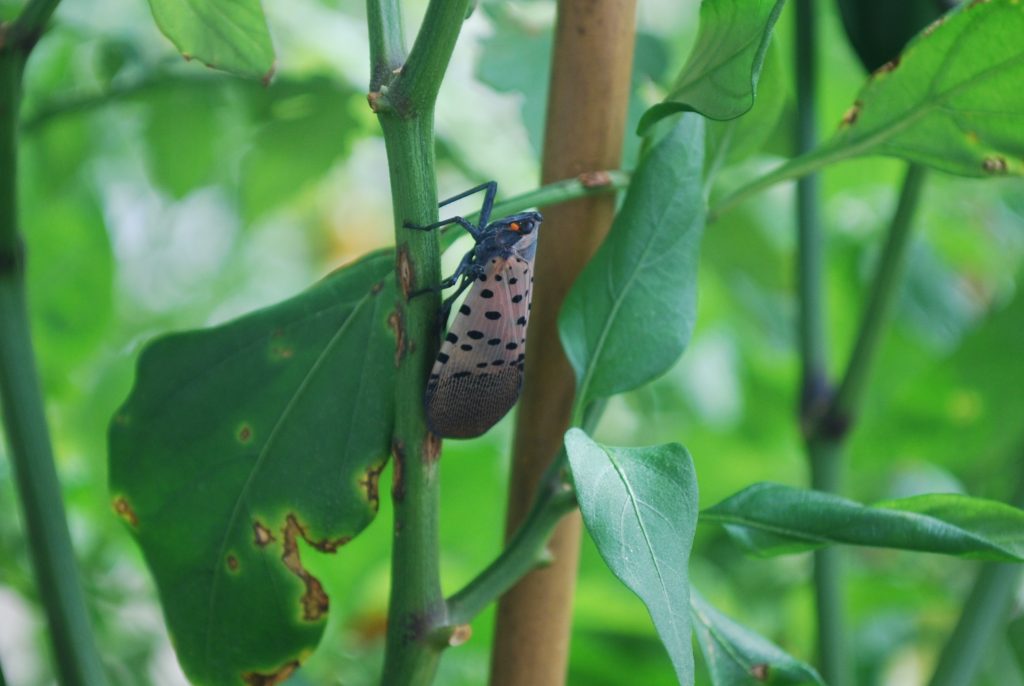

Earlier this month, New York state authorities reported sightings of the spotted lanternfly for the first time on Staten Island. For residents of South Jersey and the tri-state area, sightings of the invasive species are, unfortunately, already a common circumstance.
Last year, New Jersey state officials raised the alarm that the insect had traveled to New Jersey from Pennsylvania, having lived across the the Delaware River for at least six years after somehow making its way to the area from its homeland of Asia. Originally having found an infestation in Berks County, PA in 2014, the state moved towards attempting to eradicate the cluster and stopping its presence from growing.
The Sun spoke with Camden County Entomologist Lauren Bonus last August regarding the most wanted insect in the state, touching on the threat the spotted lanternfly poses to the environment while providing residents with answers as to what they should do if they spot it.
In a span of 12 just months, the states’ original plans regarding dealing with the pest have changed.
“Last year I was taking reports of sighting from residents across the county when people would call the county after seeing them and we were reporting them to the state,” said Lauren Bonus. “However this year, they’re so widespread that the state isn’t as interested in reporting’s anymore. If you call them you can still report it, but I’m not longer tracking them at least.
“Right now, it’s just a matter of if you see them, kill them. That’s the message we’re trying to get to people right now.”
According to Bonus and state officials from New Jersey, New York and Pennsylvania, the spotted lanternfly poses a tremendous threat to the area due to the fact that it can destroy and feed on up to 70 different plants and tress in the tri-state area, with many of them serving of agricultural importance.
The bug feeds by lathing on a tree or plant and sucking the sap out, eventually killing the tree before moving on to the next one. Bonus says the widespread migration of the spotted lanternfly can therefore massively threaten the environment and agricultural economy by attacking grape vines, hops, ornamentals and more.
Fortunately, residents don’t have anything to worry when it comes to their personal health or coming in contact with the bug.
“They’re not harmful to you or your pets, but they post such a threat to a lot of things we care about in nature,” said Bonus. “And because they’re an invasive species, they don’t have their natural predators to keep their numbers in check, which is why they’re growing at an exponential rate.”
Simply put, when you see a spotted lanternfly, kill it, says Bonus. The insect is approaching adulthood throughout the month of august, after which they will lay their eggs on trees later this fall. Since they only have one generation per year, stomping, swatting and squishing can potentially go a long way to helping slow, or even stop, their growth in the coming years.
The best time to make the most progress in the fight against their growth would be scrapping away their egg masses on trees later this fall and winter if residents are able to find them on trees, says Bonus, however doing your part now would also be beneficial.
Bonus says the county and state are currently discussing ways to address the problem in the coming years, without the use of pesticides, as a way to rid the region of the insect.
Camden County is currently discussing the potential of a pilot program next year that would utilize sticky tree bands that would trap the spotted lanternfly on a tree next spring before it can grow itself to feed on trees, as well as preventing it from being able to lay eggs and continue the cycle.


